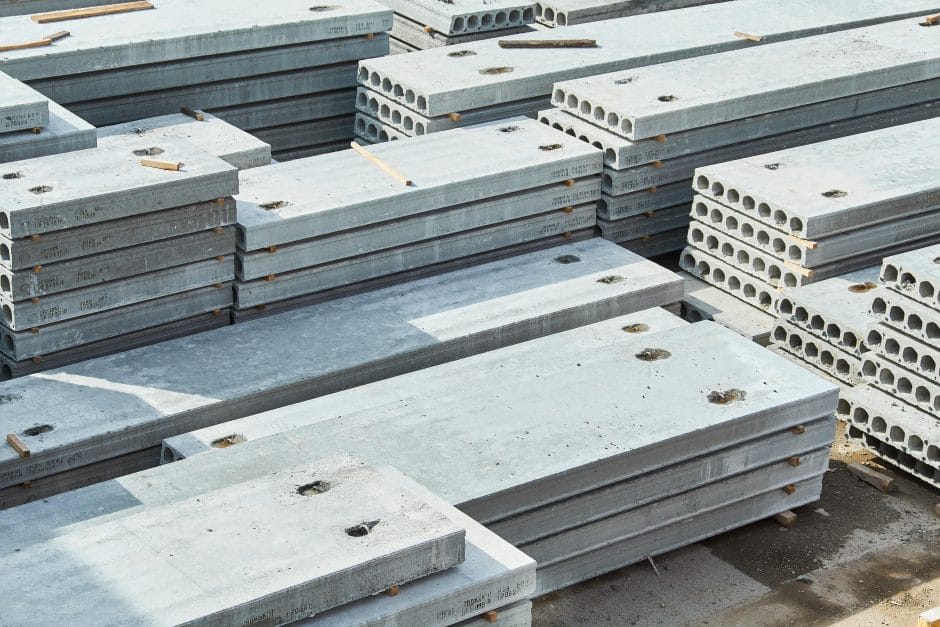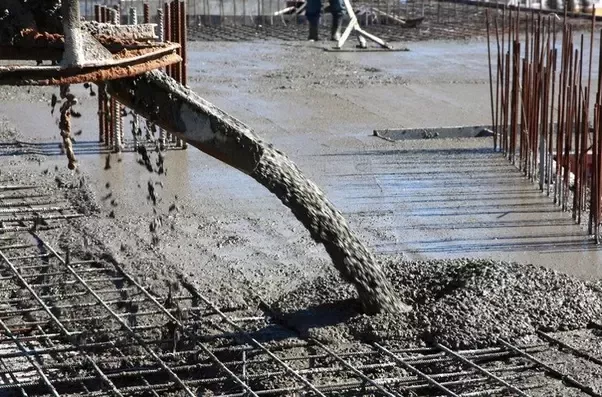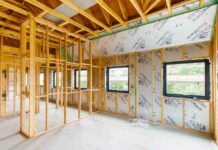Precast concrete is made by pouring wet concrete into forms, which are then cured offsite and transported to the job site. Cast-in-place concrete is made by pouring wet concrete directly onto the site, where it is then shaped and cured onsite.
Precast Concrete Walls: Traditional Method and Advantages
Precast concrete walls are a traditional method of constructing walls that has remained popular for centuries. It is widely known for its efficient construction process and cost-effectiveness. It is produced by forming molds of the desired structure in a factory or on-site before placement. Many precast elements can be used multiple times, making them a great investment when considering project timeframes. Additionally, they are highly cost-effective due to their lightweight, which saves on transportation costs and makes installation quicker.
On the other hand, it is important to mention that precast walls may not be suitable for all projects due to their rigid shapes; this could make it difficult to modify the design during construction if needed. Furthermore, it may be more expensive in comparison to cast-in-place concrete if the casting is required on-site since additional labor and equipment may be needed.
Nevertheless, precast walls are still a practical solution for many projects since they bring numerous advantages such as superior strength, durability, controlled environment of production, and quick assembly on site with less disruption of everyday activities. As a result, building owners enjoy minimized maintenance costs over the lifespan of the wall.
Overall, precast concrete walls offer an enticing option when considering project timelines, cost savings, and quality of work – making them an attractive choice for both engineers and contractors alike. As we move forward in exploring which option best suits your project needs, let’s take a closer look at the traditional process of precasting concrete.

Crucial Summary Points
Precast concrete walls are a popular and cost-effective wall construction method due to their efficient construction process. They are lightweight, reusable, strong, and durable, making them an attractive choice for engineers and contractors alike. However, it may not be suitable for all projects since it has rigid shapes that can make it difficult to modify the design during construction if needed, and there may be additional costs and labor necessary for on-site casting. Additionally, building owners benefit from minimized maintenance costs over the lifespan of the wall.
Traditional Process of Precasting Concrete
The traditional method of precasting concrete involves pouring liquid concrete into a form or mold and allowing it to harden. The hardened concrete is then transported for use on the construction site. This simple process has numerous advantages and disadvantages in comparison to cast-in-place methods. Perhaps the most obvious advantage of precasting over casting in place is speed; the time it takes to cast, transport, and install precast elements can be significantly less than with poured-in-place walls. Precasting also allows for large elements such as bridges and beams to be produced more quickly and at a lower cost than with poured-in-place techniques. Additionally, since all the pieces are constructed offsite, they can be built indoors in a factory environment, avoiding issues associated with bad weather or delays due to inclement conditions.
On the other hand, customizing precast concrete can require expensive tooling and may not meet the exact client requirements for certain projects. Furthermore, precast pieces must be transported from the factory to the job site which can add additional time and expense that cannot be avoided with poured-in-place walls.
In conclusion, while there are some drawbacks to precast concrete, its relative speed and low cost make it an excellent choice for many types of construction projects. As with any building material though, there are pros and cons to consider before making a decision on which option is best for your project. As an alternative to precast walls, cast-in-place concrete offers a low cost alternative with its own set of advantages and drawbacks—to be explored in the next section.
Cast in Place Concrete Walls: Low Cost Alternative
When it comes to comparing precast and cast-in-place concrete, there is no one-size-fits all solution. Depending on the cost of labor and materials, along with the timeline of the project, each option may be more appropriate for certain types of projects. Cast in place concrete walls are often a less expensive alternative to precast concrete when budget and schedule restraints come into play. While this method may take longer than precasting, it can serve as a great way to reduce upfront costs.
Through the use of temporary forms and construction techniques like slip forming, large concrete walls can be poured at specific locations for relatively low costs compared to precasting. While some strength is lost with improved workability, compression tests show that quality mixes can produce good results even after minimal curing times – allowing for quick turnaround times while sticking to a tight budget. For projects with limited budgets or construction phases taking place over a long period, cast in place concrete may be the best choice.
Of course, the decision between precast and cast in place will ultimately depend upon individual circumstances such as site limitations, value engineering needs, labor resources, and other factors. Ultimately, what is most important is arriving at the right solution for your particular project. With that goal in mind, it’s also important to look into potential solutions like low cost high-strength mortar mix — which may offer a cost effective alternative to traditional cast-in-place methods without sacrificing quality or performance.

Low Cost High-Strength Mortar Mix
When it comes to low cost high-strength mortar mix, cast-in-place concrete is still the preferred option in many cases. Even though precast concrete has become more popular as an alternative recently, cast-in-place walls offer a more economical and reliable option for projects requiring relatively low strength. With some special mixes, even higher strength mortar can be delivered at competitive costs. When designed and mixed properly, cast in place walls can provide superior strength compared to precast.
The main advantages of cast-in-place concrete walls are their reinforced containment and strict control over the quality of construction materials. For example, onsite inspections can be performed to check the consistency of the mix and make sure that there are no defects or irregularities. Cast-in-place walls also benefit from rapid curing times due to the ability to move quickly and place the wall with minimal delays between individual pours, reducing the overall cost per wall considerably. Additionally, due to its pourable nature, large panel sizes with full perimeter insulation are much easier to create with cast-in-place than when using precast systems.
One disadvantage of cast in place concrete is that skilled labor is required to properly place and finish the blocks because they are poured directly into the formwork. In addition, if modifications or additional reinforcement are needed after the wall has been constructed, then rebuilding will most likely be necessary, adding increased costs and labor intensive procedures to the entire process. But this downside is often outweighed by long term durability since there are no precast panels that need to be tampered with during installation due to their mass production offsite.
Overall, selecting cast-in-place concrete walls for a project involving low cost high-strength mortar can prove advantageous when done correctly. The onsite control over mix composition and faster curing times enable these walls to be created with minimal disruption at a fraction of the cost compared to precast systems – ultimately resulting in a superior final product that meets desired specifications.

















